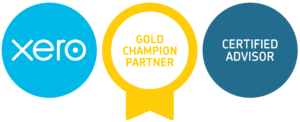Financial Modelling & Forecasting.
Budget, forecast or model which do I need?
Budget.
Budgets tend to be for next year ahead and are what you assess your business against. To help you prepare them we learn why you are doing the exercise and what it is going to be used for. Then the budget is based on that. For example:
- To control the business – to manage the business, to benchmark to review your performance against and anticipation of cash flow holes.
- To manage growth – if for example turnover was projected to triple in 6 months’ time you need a team, materials and equipment to manage that growth and work out how you are going to pay to do that.
Once you have a budget you can start to develop a strategy to implement what you want to achieve, you may start by accelerating income and delaying expenditure. Can you fund any gap out of internal resources? You could look to change terms of business that you deal on or you may decide that you need to go externally to raise funds.
Forecast.
Forecasts are longer range and not quite as detailed or as accurate as a budget although the level of detail depends on what you want. The aim of a forecast is to project forward to see what the business will look like in a few years’ time. It is more of a big picture. The same criteria as for a budget will generally be considered but over a longer term. The longer time period means that there is more variability in it. A forecast can help to show if you will run out of money or alternatively give confidence to people such as banks and investors that you will be successful.
Model.
A Model is an integrated tool that allows you to do ‘what if’ scenarios and forward planning. It is similar to forecasting but it is more integrated. You may choose to prepare a model if you are spending a lot of money on capital intensive investment such as plant, equipment or buildings and you want to see how it will pan out – you model it over its life cycle. A model is a way to look at the business in the future. You can say “if interest rates go up or down what will be the impact on the business”. This enables you to learn what the big variables will be on the business and you can see the impact on the business of any change in those. If you are taking on a new operation you can model what the costs will be and work out how to plan the costs in.
Typical scenarios for the preparation of a financial model are:
- You have an idea for a new project and you want a cash flow for the project to understand if it’s viable
- You want to raise money as bank debt to grow/to spend on equipment/buildings
- Event driven – for example to prove solvency for audit purposes/a transaction such as a capital reduction or purchase of own shares
- To raise money from investors as equity investment.
What do we do?
Listen to you and understand your business, work with you to identify the issues and the drivers. How will your project work? What will drive it? What will it look like? Any model has to be suitable for the situation, for example, for an investor or bank you want an integrated profit and loss, balance sheet and cash flow. Sometimes you don’t need all that you just need a cash flow. Once we understand why it is needed we can prepare a tool that is appropriate for how it will be used. For example if it’s being used every day a simple model can be created for you to run daily “what if scenarios”. A more complicated example such as the development of a biomass plant may look at different financing routes and variables such as changes to the fuel source or payment terms with the contractors and the impact these have upon the profitability, cash flow and cash generation. Or projecting the impacts of subsidy changes or changing the finance.
How can it help me?
It can help you present confidently on your business or proposal to an investor.
Modelling the tax liabilities of a business can help to minimise them and delay the cash flow impact. You may see that you can push back when you’ve got to pay HMRC so the cash is in the business for longer – by seeing when it has to be paid. You may also spot that you could bring forward some capital expenditure meaning that you can claim some capital allowances and thus reduce that amount of tax immediately payable.
As part of the process of creating the financial model there could be spin out benefits as the model is prepared. As you look at different areas and ask different questions about the business, for example, you may realise that your income recognition policy is inappropriate which may have the result of delaying recognition of sales and profits.
Subscribe.
For regular updates on developments that can directly affect you and your business, delivered straight to your inbox, subscribe to our email.
- • New legislation
- • Key date reminders
- • Efficiency guidance
- • More
London Office
99 Bishopsgate
London
EC2M 3XD
Nottingham Office
3-5 College Street
Nottingham
NG1 5AQ
South Yorkshire Office
The Innovation Centre
217 Portobello
Sheffield
S1 4DP

